Like most players, I first started playing baseball with a hand-me-down glove that I got from my dad. And like many, I quickly outgrew the glove. But the little time I had with the glove told me all I needed to know – I was going to take the sport seriously and needed the right gear for the game.
So, my dad got me the first real glove that I could call my own. At that time, I didn’t think much about it, so I went to the store and picked one out. My dad did the rest. However, once I grew up and had to buy my own gloves, I quickly realized how tough it could be to find the right size.
Well, tough isn’t really the right word here; confusing would be more appropriate. You see, the right size for you depends not only on your hand size but also on your playing position and your gripping style. And that can make things a bit complicated if you are buying your first glove.
Here, I will help you understand the ins and outs of how to size a baseball glove so that you will be able to pick out one that fits your hand perfectly and lets you push your skills to the next level. Let’s hop in.
How to Measure a Baseball Glove
Before I get to talking about the right size of gloves for you, you need to know how a baseball glove is measured. Gloves are measured in inches, but depending on the type of glove and the player’s hand size, the size of the glove can vary.
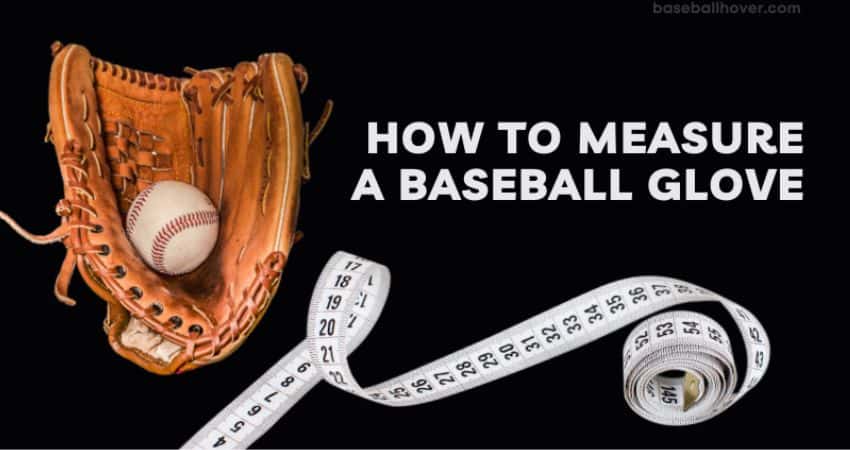
To make things even more confusing, the fielder’s gloves and the catcher’s mitt are measured differently, and a rookie player might not know the difference. So, I’ll address both sizing formats and help you get a general idea about glove sizes.
The catcher’s mitt, as the name suggests, is only used by the catcher. Unlike the fielder’s glove, a catcher’s mitt is measured along its circumference. To get the size of a catcher’s mitt, you need to wrap a measuring tape around the center of the glove. Mitts are measured this way to give you a clearer picture of the catching area.
Baseball Glove Sizing
As I said previously, the size of the glove that’s right for you depends on two main factors – your age, and your playing position. So that can make it difficult for me to give you a straight answer here. While I can lay out the basic idea, you need to do the brunt work here.
But don’t worry, most glove manufacturers allow you to replace your glove if you get the wrong size. Just make sure you don’t damage the glove in any way, or start breaking it in if it doesn’t fit right. With that said, let’s look at two size charts for baseball gloves in relation to your age and playing position.
Baseball Glove Size Chart by Age
There are a lot of differences between youth and adult baseball gloves. And one of the key differences between them is their size. Naturally, youth players with smaller hands will benefit more from a smaller glove size. Here is a quick chart that gives you a basic idea about the size of gloves for different age groups.
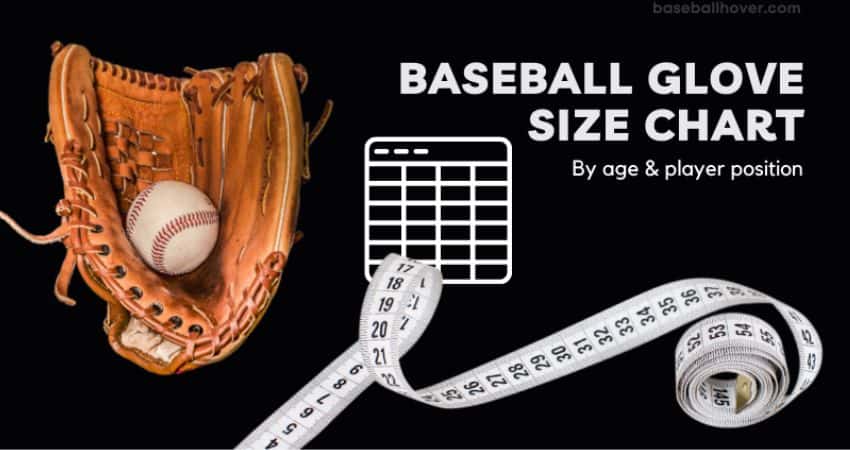

| Age Group | Glove Size Range |
| Under 7 | 8 to 11.5 inches |
| 8 to 10 | 10 to 12 inches |
| 11 to 13 | 11 to 12.75 inches |
| Over 14 | 11.25 to 13 inches |
As you can see, younger players usually have a more varied preference, with sizes ranging from 8 to 11.5 inches. While as the player grows older, his size preferences shrink, giving you less flexibility in his choice.
Baseball Glove Size Chart by Position
Your age alone is not the sole dictator of the right size of glove for your hand. Another thing that you need to factor in here is your playing position. To keep things simple, I will lay out a chart below to help you understand the right glove size for each position
Since the age groups can complicate things, I will only talk about the glove size for players over 14.
| Playing Position (14 years or above) | Glove Size Range |
| First Base | 12 to 13 inches |
| Second Base | 11.25 to 11.5 inches |
| Third Base | 11.5 to 12 inches |
| Pitcher | 11.5 to 12 inches |
| Outfield | 12 to 13 inches |
One thing is clear from the chart above – outfielders and first basemen tend to go with bigger gloves. The reason is that with those playing positions, the player can benefit more from a larger and deeper pocket that comes with a bigger glove.
How Should a Baseball Glove Fit Your Hand
Finding the right glove is one thing, but getting it to fit your hand the right way is another battle entirely. Now, if you are a rookie, you might not know this, but baseball players rarely wear their gloves the traditional way anymore.
The traditional way means when you slide your hand all the way inside the glove and put your fingers in their respective finger holes.
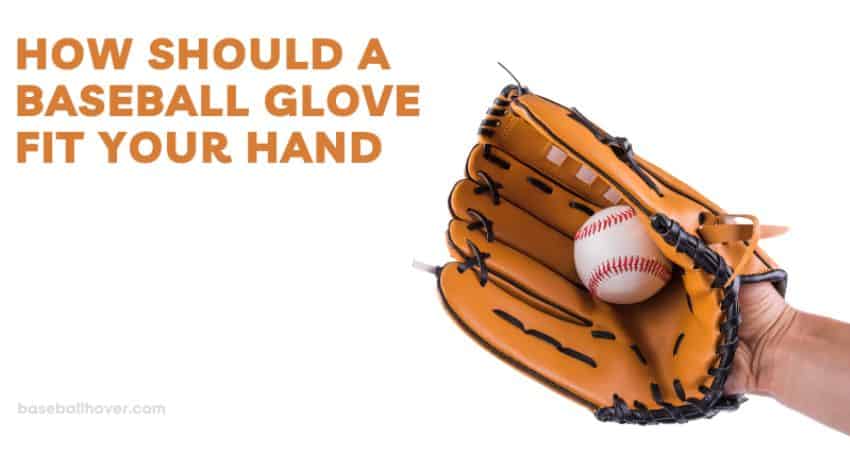

I won’t go into too much detail since I already discussed how to wear a baseball glove in another article. So you can check that out for more information. Once you figure out how you want to hold your glove, you should make sure that it feels snug and comfortable in your hands after you wear it.
If you keep the heel of your palm outside as the pros wear it, it’s natural for it to feel a bit uncomfortable at first. But if the glove keeps feeling awkward to control even when you get used to it, then there’s a possibility that the glove is too big or small for your hands.
The best advice I can give you is to make sure your glove fits your hand in the traditional way. If the glove feels comfortable when you slide your hand all the way in and there’s enough wiggle room for your fingers once you put them inside, then the size of the glove is perfect for you.
How to Measure Hand for Baseball Glove
Now that you have a clearer picture of the nuances of baseball glove sizes, you must be wondering – how do I know my hand size? Well, you need to figure that out yourself. All you need for that is a tape measure or a ruler.
Start by placing your finger on a flat surface and spread out your hands. Then place one edge of the tape measure at the tip of your index finger. Pull down the other end to the heel of your palm. This will give you the length of your hand and the size that you need to go for when choosing a baseball glove.
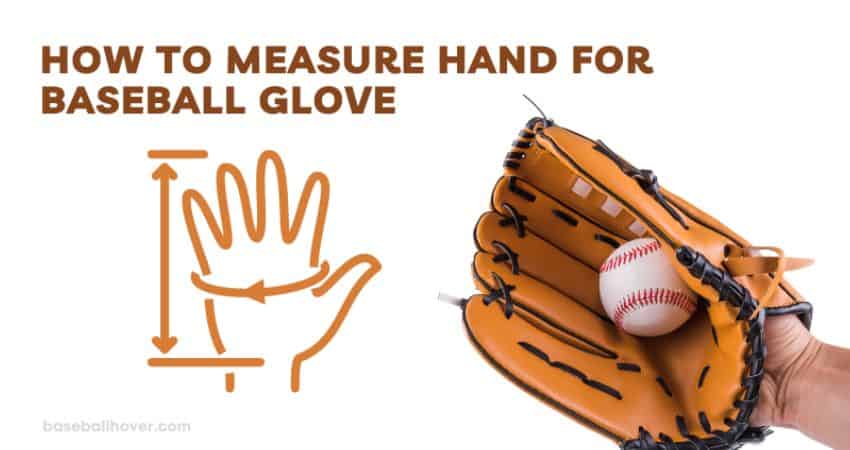

A word of advice before you go for it, though – if you see that your hand measures between two glove sizes and you need to choose one, go for the smaller glove. In the case of baseball gloves, using a smaller glove is usually better than getting stuck with a bigger glove.
On top of that, if you are unsure of your playing position, consider getting a utility glove. Utility gloves are suitable for multiple playing positions, making them a great choice for players who are just starting out and don’t know their playing role. But once you get a better idea of your position, I would recommend switching to a position-specific high-end baseball glove.
How to measure a Fielder’s Glove
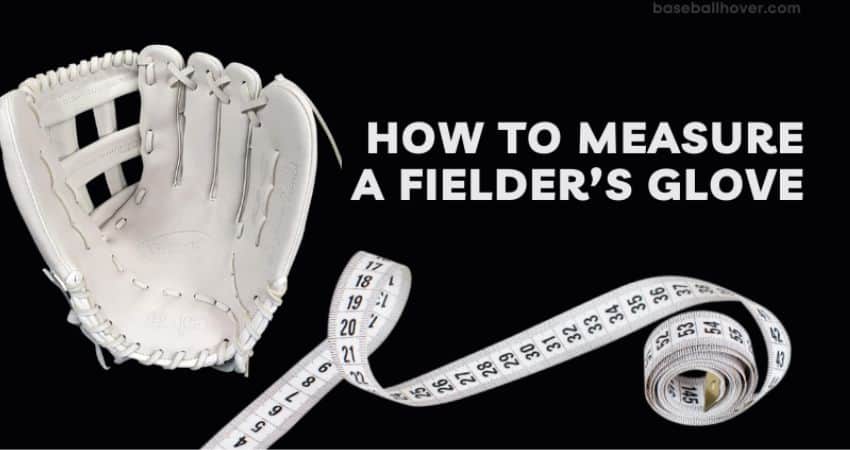

The fielder’s glove refers to the ones used by outfielders, infielders, and pitchers. To get the size of these gloves, you will need to measure from the base of the heel up to the tip of the index finger along the palm of the glove. In other words, the size of a fielder’s glove is measured by its vertical size.
How to measure a Catcher’s Mitt
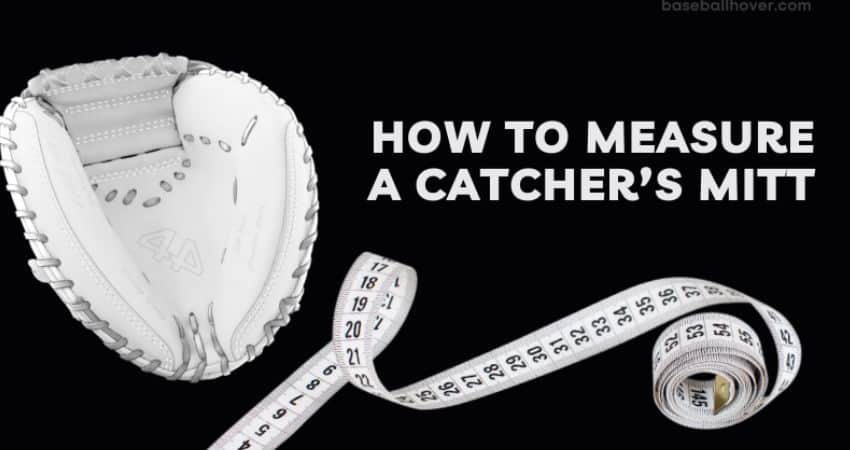

The catcher’s mitt, as the name suggests, is only used by the catcher. Unlike the fielder’s glove, a catcher’s mitt is measured along its circumference. To get the size of a catcher’s mitt, you need to wrap a measuring tape around the center of the glove. Mitts are measured this way to give you a clearer picture of the catching area.
A Few Final Words
Wearing the right size of gloves can make all the difference between you fumbling the ball and making an epic catch. And while it might seem complicated at first, it gets a lot easier when you go through a couple of glove replacements.
If you are still having trouble figuring out the right size, I would suggest talking with a friend or consulting your coach for some more insights. You could even ask them to tag along while you go look for a new glove for your next game.
I hope my in-depth explanation of how to size a baseball glove can be of help the next time you are looking for a glove replacement. Cheers!
